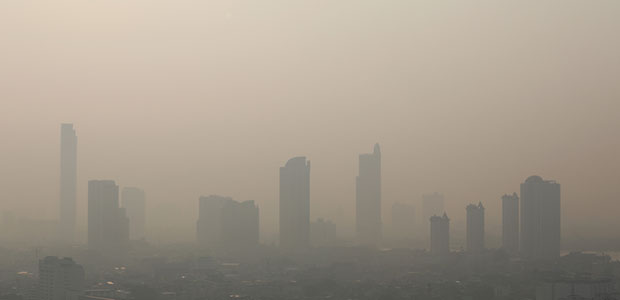
Health Researchers Receive $1.2 Million to Improve Air Quality Measurements
Earlier this week, researchers received $1.2 million to develop a model to better measure the effects of particulate air pollution on human health, according to the Milken Institute School of Public Health.
It’s known that bad air quality has negative effects on human health, but the technology for estimating exact health consequences and other variables are still being developed. Researchers just received funds to better study particulate pollution and human health in order to help policymakers identify and implement tactics to address air pollution.
Susan Anenburg, an associate professor of occupational and environmental health, is leading a team to develop an air quality prediction model to help lawmakers and policy influencers better address pollution for public health. Pollution experts said the model will really work to keep people safe by mitigating the effects of air pollution—which causes diseases like lung cancer and chronic obstructive pulmonary disease.
The model is not just for policymakers, however; an organization of 94 cities, called C40 cities, is working to combat climate change, and the model would great enhance its efforts.
“Our new air quality model will enhance C40’s climate action planning tool by also providing information about the local air quality and public health improvements that could be realized by implementing these carbon reduction measures,” Anenberg said in an email.
The model works as a kind of simulations of choices and measurement of effects—Anenberg explains it will simulate how different efforts to reduce emissions will affect air pollution levels. The estimates from the model will be helpful to researchers on understanding what actions cities should take to improve air quality, reduce carbon emissions, and decrease overall rates of premature mortality. This will be especially helpful for communities close to industrial centers and areas with high traffic pollution.
“Understanding the local air quality and health benefits of taking action to reduce greenhouse gases is important because the climate benefits would be felt globally and over centuries, while the air quality and health co-benefits would be felt locally and more immediately,” Anenberg said.
Anenberg and researchers are working with another group combating pollution, OrbisAir, along with the University of Washington and the University of Colorado Boulder to develop and test the air quality model. The model will be based on the “best current understanding” of how emissions react in the atmosphere.
Anenberg is not new to the air pollution research realm—earlier this summer, she led a study to estimate how air pollution affects heart and lung disease rates in global urban populations.
While air pollution affects most places inhabited by humans, there are certain areas and communities that see the worst of it. Ronald Cohen, a professor of earth and planetary sciences at the University of California Berkeley, said that poorer communities exposed to industrial pollution often see the highest levels of particle concentration in the air.
“Aerosol is high enough in lots of places that we’re spending a disproportionate amount of money on public health to help sick people,” Cohen said. “We would rather those people were healthy and working, instead of sick because of the air they’re breathing.”
A citizen’s risk of illness from air quality can even differ by zip code based on proximity to particular factories or roads—one neighborhood’s air quality might be gravely different from that of the one across the bridge. And this difference can mean something as fatal as a decreased life expectancy.
“We know that it can differ rapidly within the same city,” Baker said. “And we also don’t really have a lot of good ways of managing some of those kinds of hotspots and urban areas that are particularly susceptible.”
Patricia Koman, a faculty research program manager at the University of Michigan, said the model can identify policy changes—like mandating a minimum distance between “congested” highways and residential areas—to mitigate the influence of particulate pollution on human health.
Even small amounts of pollution can have immense public health concerns, and with science and research, it’s something we can do something about, Koman noted.